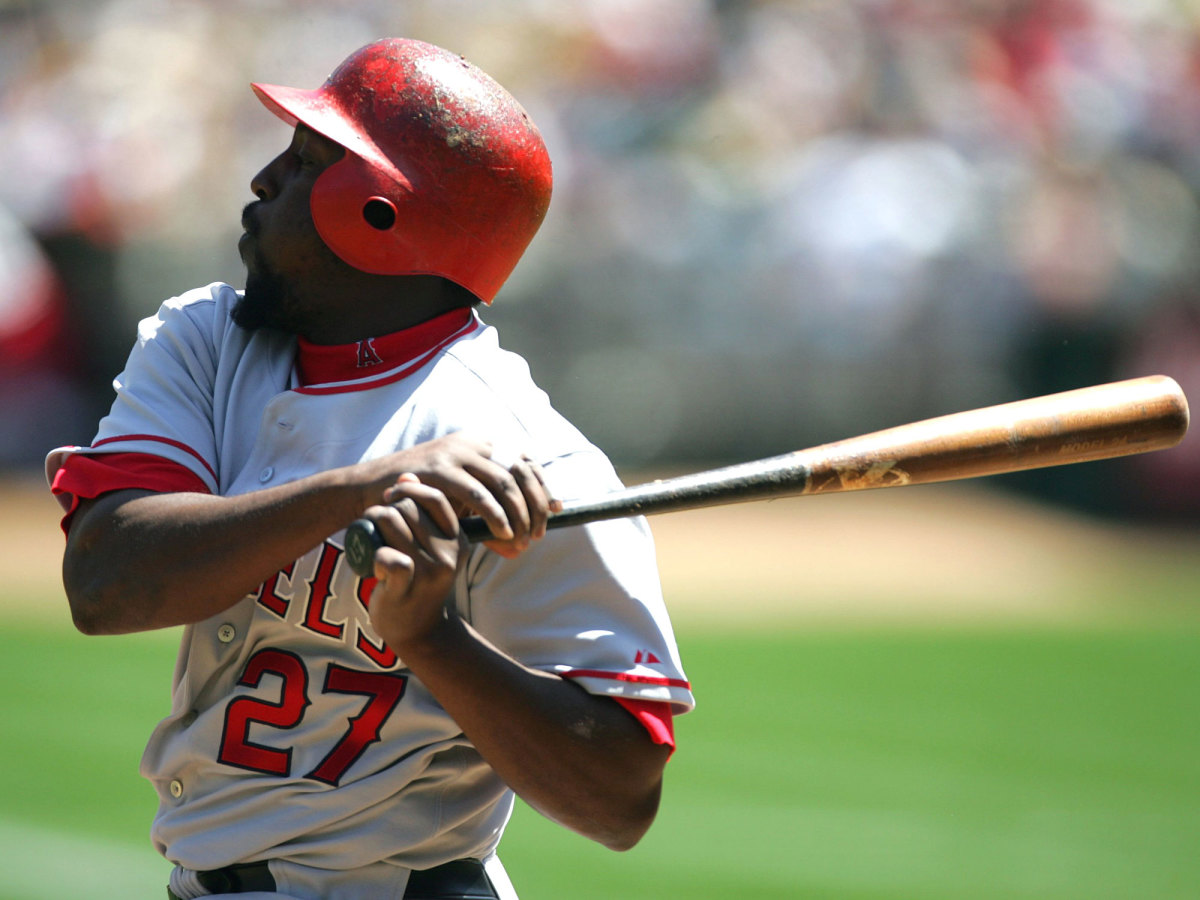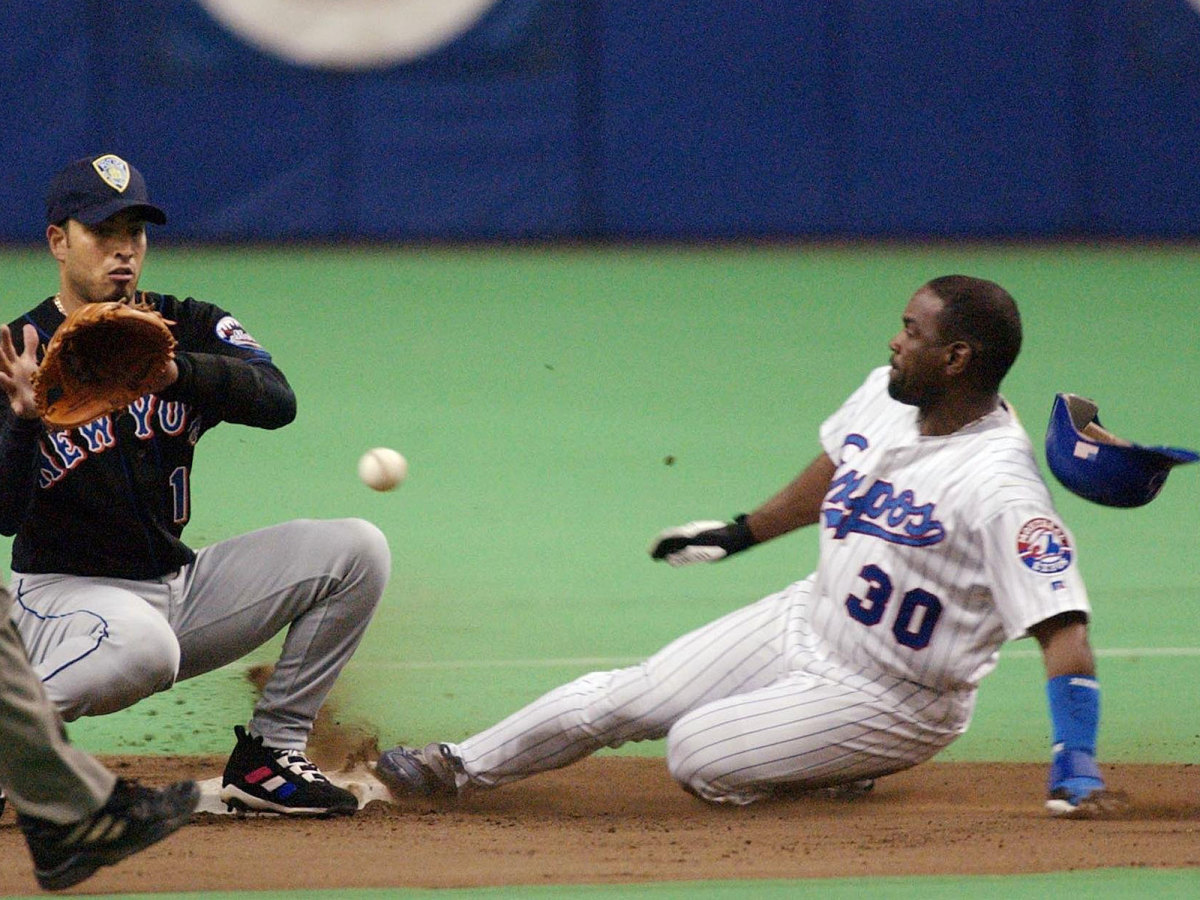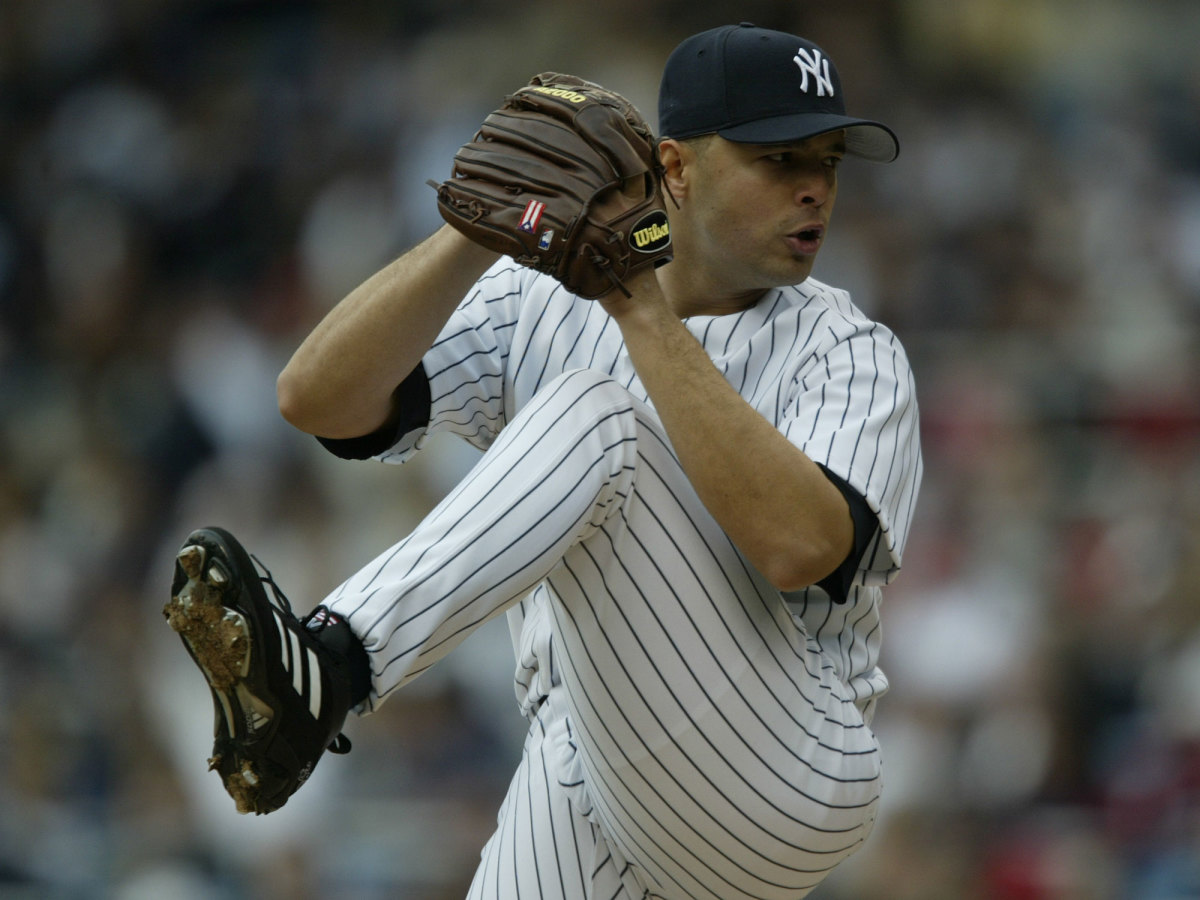JAWS and the 2017 Hall of Fame ballot: Answering the basics, five big questions

The Baseball Writers Association of America released the 2017 Hall of Fame ballot on Monday, with 15 holdovers joined by 19 newcomers. Unlike the past two years—in 2015, all but three grandfathered candidates had their eligibility unilaterally truncated from 15 years to 10; in 2016, inactive voters were purged from the rolls—there's no new wrinkle this time. The Hall's big rule change in 2016 concerns the Era Committees, a separate voting process I covered in July.
Over the next six weeks, I'll profile all 34 BBWAA ballot candidates—either at length or in brief—with my JAWS system, which I have used to break down ballots since the 2004 cycle. That series will kick off next week. In this column, I'll examine the five biggest questions attached to this ballot, but first, let's review the basics for eligibility and election to the Hall of Fame on the BBWAA ballot.
• To be eligible, a candidate must have played in the majors for parts of 10 years (one game is sufficient to be counted as a year in this context),
• The candidate must have been out of the majors for five years (the minors or foreign leagues don't count). This year, that means that the newcomers last appeared in the majors in 2011.
• The candidate must then be nominated by two members of the BBWAA's six-member screening committee.
• Each new candidate has 10 years of eligibility on the ballot.
• To be elected, a candidate must receive at least 75% of the ballots cast.
• Each voter is allowed to list up to 10 candidates. (That number has become a point of contention in recent years. Last year, the Hall tabled a BBWAA proposal to expand to 12 slots. I was on the committee that recommended the change, though I won't get my own ballot until the 2021 cycle.)
• Candidates who don't receive at least 5% of the vote fall off the ballot and can then only be considered for election by what's now called the Today's Game Committee.
• Ballots must be postmarked by Dec. 31, with the results to be announced on MLB Network on Jan. 18 and inductions to take place next July 30 in Cooperstown, N.Y.
• Here are the 15 holdovers to the ballot: Jeff Bagwell, Barry Bonds, Roger Clemens, Trevor Hoffman, Jeff Kent, Edgar Martinez, Fred McGriff, Mike Mussina, Tim Raines, Curt Schilling, Gary Sheffield, Lee Smith, Sammy Sosa, Billy Wagner and Larry Walker.
• And here are the 19 newcomers: Casey Blake, Pat Burrell, Orlando Cabrera, Mike Cameron, J.D. Drew, Carlos Guillen, Vladimir Guerrero, Derrek Lee, Melvin Mora, Magglio Ordonez, Jorge Posada, Manny Ramirez, Edgar Renteria, Arthur Rhodes, Ivan Rodriguez, Freddy Sanchez, Matt Stairs, Jason Varitek and Tim Wakefield.

On to the five big questions.
1. Are any of the newcomers locks for induction this year?
No. But among those 19, four stand out as particularly worth of consideration: Guerrero, Posada, Ramirez and Rodriguez. Of that quartet, only Ramirez, a leftfielder, and Rodriguez, a catcher, meet or exceed the JAWS standards at their respective positions, but one needn't invoke advanced statistics to make see their worthiness.
Only Ramirez, with 555 career home runs, has one of the magic numbers—3,000 hits, 500 homers and 300 wins—that have generally guaranteed election. I say "generally" because allegations regarding performance-enhancing drugs have left some players who achieved those milestones on the outside looking in, including holdovers Bonds (762 homers), Sosa (609) and Sheffield (509) and Clemens (354 wins). None of those players was ever suspended for violating the game's drug policy; Ramirez served two such suspensions. Don't hold your breath waiting for him to get elected; it certainly won't happen in 2017.
In fact, the voters have yet to elect anyone who's been suspended for PEDs even once, and they've dragged their feet on players whose connections to PEDs amount to rumors, innuendo and the period before the game had an enforceable drug policy. The 2016 election of Mike Piazza, who despite a strong claim as the best-hitting catcher of all-time needed four years to gain entry, may signal a changing of the guard; he admitted to using androstenedione in the late 1990s, before it was outlawed. Rodriguez—with a similarly strong claim as the best defensive catcher of all time and with longevity records for the position as well—was accused of using PEDs by Jose Canseco in his 2005 book, Juiced, but like Piazza, he never tested positive and was never mentioned in the Mitchell Report. I expect he’ll take a few years to get in.
Guerrero, a former AL MVP and an eight-time All-Star with 2,590 career hits and 449 homers, has a very strong case in terms of traditional stats and accomplishments and is the most likely first-year player to be elected. He also has something of a magic number: his .318 batting average, compiled over 9,059 career plate appearances. Only one player with at least 6,000 PA who's outside the Hall has a higher average: Babe Herman, who hit .324 in 6,229 PA—a short career by Hall standards. Raise the bar to 7,000 PA, and there are just seven others who hit .310 or above and are not enshrined, including two who are not yet eligible (Todd Helton at .316 and Derek Jeter at .310) and three who are on this year's ballot but have little chance of immediate election (Martinez at .312, Ramirez at .312 and Walker at .313).
On the advanced stat front, Guerrero is short of the career WAR, peak WAR and JAWS standards at rightfield, his primary position. With an electorate that has paid increasing attention to such metrics in recent years, he won't be an automatic 'yes' for everyone, particularly on a ballot that remains quite crowded.
As for Posada, he's one of the top offensive catchers of all time and a mainstay on six pennant-winning Yankees teams, four of which won the World Series. Subpar defense keeps him below the career/peak/JAWS standards, however, and he racked up just 1,664 hits. No candidate in the Expansion Era (post-1960) has been elected with fewer than 2,000 hits, so he faces an uphill battle.

2. Which holdovers have a chance in 2017?
Three players received at least 65% but less than the necessary 75% on the 2016 ballot and are hoping to cross the threshold this year: Bagwell (71.6), Raines (69.8) and Hoffman (67.3). All are in good shape for eventual election, as every person except Gil Hodges and Jack Morris who has received more than 60% of the vote has gotten in—and Morris has yet to have his day in front of the era committees. That said, there's some urgency here, as Raines is in his 10th and final year of BBWAA eligibility. A seven-time All-Star who ranks fifth all-time in stolen bases (808) with a higher success rate (84.7%) than any other player with at least 300 attempts, he’s eminently worthy of enshrinement, ranking eighth among leftfielders in JAWS and surpassing the standards across the board.
The good news is that there’s at least some evidence of a “final year” bounce. Since the voters returned to annual balloting in 1966, the 23 candidates in their last year of eligibility gained an average of 3.2%, and the 14 who had already received at least 35% in their penultimate year gained an average of 6.2%. That said, only three have been elected in their final year of eligibility—Red Ruffing (1967, after a run-off), Ralph Kiner ('75) and Jim Rice (2009)—and the last player in this general range, Morris (67.7% in '13) lost ground in his final year amid a crowded ballot.
Indeed, the crowd at the top makes Raines’ election an uncertainty. Since 1966, just two other times have three candidates returned to the ballot in the same year after receiving between 65–75% the previous year; both times, only two were elected in that next year. It first happened in 1983, with slugger Harmon Killebrew, shortstop Luis Aparicio and relief ace Hoyt Wilhelm.
Player | 1983 Vote% | 1984 Vote% |
|---|---|---|
Killebrew | 71.9 | 83.1 |
Aparicio | 67.4 | 84.6 |
Wilhelm | 65.0 | 72.0 |
Wilhelm was finally elected in 1985, but the very next year, the same scenario happened again with outfielder Billy Williams and righthanded pitchers Jim "Catfish" Hunter and Jim Bunning.
Player | 1986 Vote% | 1987 VOTE% |
|---|---|---|
Billy Williams | 74.1% | 85.7% |
Catfish Hunter | 68.0% | 76.3% |
Jim Bunning | 65.6% | 70.0% |
Unlike Wilhelm, Bunning had a much longer wait for a plaque: He missed induction by just four votes in 1988, fell off the BBWAA ballot after the '91 cycle and didn't get in until he was tabbed by the Veterans Committee in '96. Notably, neither the 1984 nor '87 ballots had any first-year candidates who received significant support, with Wilbur Wood (3.5%) getting the highest share in the former year and Bobby Bonds (5.85%) the latter.
Remember, too, the rarity of BBWAA electing more than two players. Only six classes since 1955 have elected three or more players. If we're lucky enough to get three or more honorees this year—as happened in 2014 (Greg Maddux, Tom Glavine and Frank Thomas) and '15 (Craig Biggio, Randy Johnson, Pedro Martinez and John Smoltz)—it would be the most in a four-cycle span since 11 men were elected from 1953 to '56.
National League hot stove preview: Biggest question for each team
3. Is this ballot as congested as recent years?
No, at least as I track it on both traditional and advanced statistical fronts. Ten players exceed the JAWS standards at their positions. Starting in 1966, the beginning of the modern history of Hall voting, and running through 2012, there was never a year with a double-figure total of JAWS-worthy candidates. That's changed significantly in recent years.
2013: 10
2014: 14
2015: 12
2016: 11
2017: 10
This year's ballot includes 12 players who exceed a JAWS of 50 (including Guerrero), the lowest number since 2012, when there were eight; the past four ballots have averaged 15 such players, far more than could fit on any individual ballot.
From a traditional perspective, this ballot is slightly less stacked than in recent years with players who have achieved the major statistical thresholds for hits, homers and wins. The total of five players with at least 3,000 hits, 500 homers or 300 wins—unseen from 1966 to 2012—is the lowest it's been in the past five years.
Thus, the flood of otherwise qualified candidates who have failed to reach 75% either due to the logjam or to differing attitudes with regards to PED-tinged candidates is still swelling the ranks. That will hurt the tier of players who finished below Hoffman in 2016, especially Curt Schilling (52.3%, now entering his fifth year and working hard to hamstring his own candidacy), Edgar Martinez (43.4% entering his eighth year), Mike Mussina (43% entering his fourth year) and Lee Smith (34.1% and one of those who was grandfathered in and is entering his 15th and final year of eligibility).
American League hot stove preview: Biggest question for each team
4. Are we done talking about PEDs yet?
Nope, though we're probably entering a new phase of the discussion. Ramirez, who was suspended for 50 games in 2009 and 100 in '11, and Cameron, who was suspended for 25 games due to a banned stimulant in 2008, are actually the first drug-suspended players to reach the ballot since Rafael Palmeiro in 2011. Cameron isn’t otherwise qualified, but Ramirez is. With Piazza gaining entry, there will be handwringing over Rodriguez and Bagwell (who, like Piazza, admitted to using andro back when it was legal), but with a precedent having been set, such reservations are no longer an obstacle to election.
Of course, we'll still hear plenty about Bonds and Clemens, who are in their fifth years of eligibility and received 44.3% and 45.2% last year, respectively. They're in no danger of dropping off the ballot, but both Sosa (fifth year) and Shefield (third year) are; in 2016, they received 7% and 11.6%, respectively.

5. Where's Javier Vazquez?
Good question. In any given year, among the newcomers are several who stick out as players with absolutely zero chance of election and little chance of getting even a single vote. This year's group includes Cabrera, Guillen, Mora and Rhodes. For such players, some of whom made All-Star teams and helped win championships, merely appearing on the ballot is the final stop of their fine careers. But not every eligible player who attains that level makes it past the screening committee and onto the ballot, and weird things can happen along the fringes. In 2014, for example, Shannon Stewart (who finished fourth in the AL MVP vote in 2003) and Esteban Loaiza (the AL Cy Young runner-up that same year) were left off the ballot; Jacque Jones and Armando Benitez made the cut. Last year, Chan Ho-Park—who won 124 games, made an All-Star team and was the majors' first Korean-born player—was left off.
This year's recipient of the ballot screw job is Vazquez, who spent 14 years in the bigs with the Expos, Yankees, Diamondbacks, White Sox, Braves and Marlins, going 165–160 with a 4.22 ERA with one All-Star appearance and three trips to the postseason. No, that's not a Hall of Fame ERA (the highest is Red Ruffing's 3.80), but it’s lower than Wakefield’s 4.41. In addition, Vazquez’s 105 ERA+ matches that of Wakefield and is better than those of the enshrined Hunter (104) and Rube Marquard (103). The knuckleballing Wakefield has exactly 200 wins, and Vazquez does not, but his total is still the highest of any player born in Puerto Rico. As with the snub of Park, that's a bad look for the BBWAA.
This can't be a matter of won-loss record, since Vazquez is five games over .500; past candidates such as Bobo Newsom (211–222), Tom Zachary (186–191) and Danny Darwin (171–182) had losing records. Among BBWAA-eligible players with a 3.50 ERA or higher, I could find only four with more wins who never made the ballot: Bob Friend (197–230, 3.58 ERA, 107 ERA+), Murray Dickson (172–181, 3.66 ERA, 109 ERA+), Bill Lee—not the Spaceman—(169–157, 3.54 ERA, 106 ERA+) and John Burkett (166–136, 4.31 ERA, 99 ERA+).
What's more, Vazquez ranks 30th all-time in strikeouts (2,536), with six years in his league's top five. Yes, he played in a strikeout-heavy era, but no player with that many strikeouts has ever been skipped. Vazquez's 41.1 JAWS is tied with Hall of Famer Addie Joss for 136th all-time, ahead of six other enshrined starters (Hunter and Marquard included), as well as Morris (38.4) and Wakefield (29.8). It's still 21 points below the standard at the position—low enough that in my series he'd get a brief career summary instead of a full rundown—but he deserved one more chance to take a bow for his distinguished service.
As for the most unworthy newcomer, Stairs has a claim as the worst position player nominated since I've been doing JAWS. Though he hit .262/.356/.477 with 265 homers in a 19-year career with 12 different teams, bad defense and DH duty limited him to just 14.3 WAR and 13.6 JAWS, 44.5 points below the rightfield standard. In terms of the current formulation of WAR, that surpasses Shawon Dunston, who in 18 seasons scraped together just 11.5 WAR and 11.2 JAWS, 43.6 points below the shortstop standard. Get it together, screening committee.
